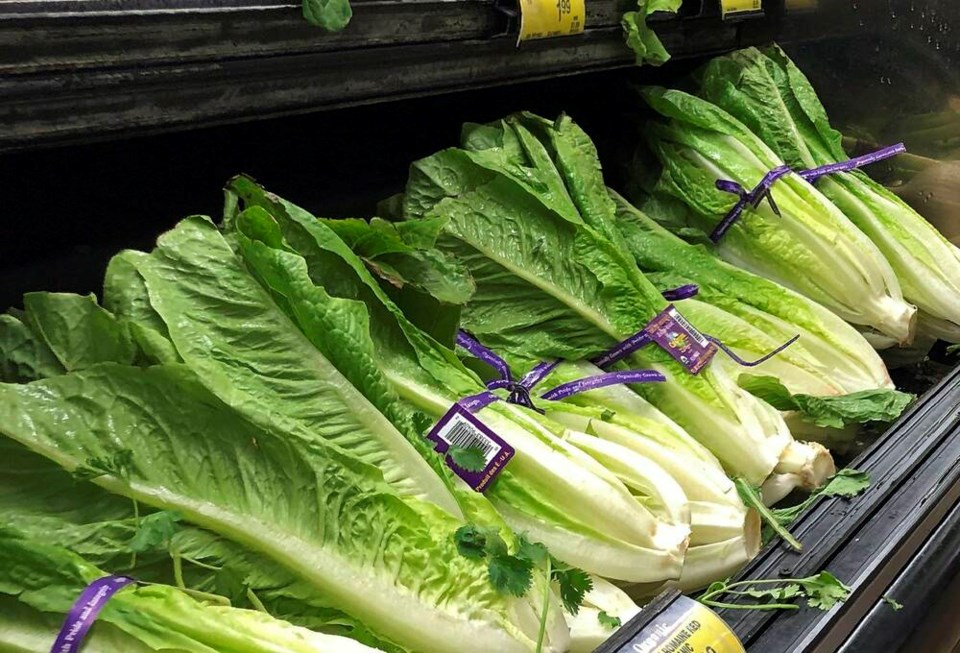Many consumers have noticed that sa国际传媒 has run out of lettuce — well, some lettuce, mainly from California. Crops were destroyed by a drought and a nasty virus, according to some reports.
This is the time of year when we import plenty of leafy greens, since our farmers can’t compete on such a scale. This has been going on for years.
Over the past few weeks, lettuce is almost impossible to find in big-box stores. But if lettuce is to be found, it is 30 per cent to 40 per cent overpriced, on average. Restaurant operators are being asked to pay four times the price for cases of lettuce. Most don’t bother.
Small-scale and independent retailers and operators would have some in stock, since they often get supplies from other domestic players. It’s hit and miss.
Some grocers have learned from the great cauliflower “crisis” when the Canadian dollar dropped, and prices skyrocketed in a matter of days. That was in January 2016. Grocers increased prices, but consumers weren’t buying, and tons were wasted. Before importing overpriced commodities, Canadian retailers are thinking twice now.
Don’t despair, though, if you need your leafy green fix for the winter months. Other markets like Arizona and even Mexico will start shipping lettuce soon, in time for the busy holidays.
Still, California is drying up, which is a problem for sa国际传媒, and it will likely get worse.
We have seen this coming for quite some time. Short-term shortages, recalls and disruptions coming from California have been numerous. Perhaps not noticeable for most, but certainly numerous.
This lettuce shortage is much more visible and has been amplified by extensive media coverage. This is a clear case of how climate change is impacting our dinner plates, in real time. And we are slowly coming to the realization that our current approach to getting leafy greens over the winter months is no longer sustainable.
In California, farmers have had to get water from farther away to irrigate fields, and distances have only grown year after year. As farmers’ distances increase, so do risks.
Putting more pressure on irrigation systems will lead to supply failures and, of course, food contamination. Poor farmland planning and biosecurity practices led to more recalls, since the water was at times situated next to livestock.
The great 2019 romaine lettuce recall during the holiday season a few months before the pandemic when thousands of kilos of product went to waste is a good example.
sa国际传媒 did farm lettuce before, and lots of it. The first lettuce ever to be grown in sa国际传媒 was in 1927. The United States supplied us with lettuce before, but our farmers were competitive.
Scale became an issue, which is why sa国际传媒 started to import more product from the United States. Farming in sa国际传媒 was very diverse from the 1940s to the 1980s, just before NAFTA 1.0 came along. About 40 years ago everything changed, and it made more sense to import produce at a lower price. sa国际传媒 now buys more than $1 billion worth of fresh vegetables per year.
The reality is that we have become dependent on other markets to feed ourselves over the winter months. There was nothing wrong with that model until California and other places started to feel Mother Nature’s wrath. Since climate change is real, sa国际传媒 needs a plan.
We can always import from other markets, but Canadian importers are already hedging against some import options they currently have, by constantly looking for other options.
The other obvious path would be to grow more domestically, all year round. But growing lettuce in a controlled environment is capital-intensive and would require optimal plant science and genetics.
California producer Driscoll’s recently licensed Canadian farmers to grow their berries in sa国际传媒, since the company can’t get water.
This could happen to other commodities like lettuce — why not? Instead of looking at international trade as the exchange of money and food, more are considering exchanging intellectual property, while empowering farmers located in desirable topographies. Makes sense.
Climate change is one of our agriculture’s greatest challenges, but it also comes with great opportunities, especially for sa国际传媒. We need to think differently about how we do business amongst nations.
Growing more at home is nice, but it’s much harder when going at it alone. Partnerships are key.



